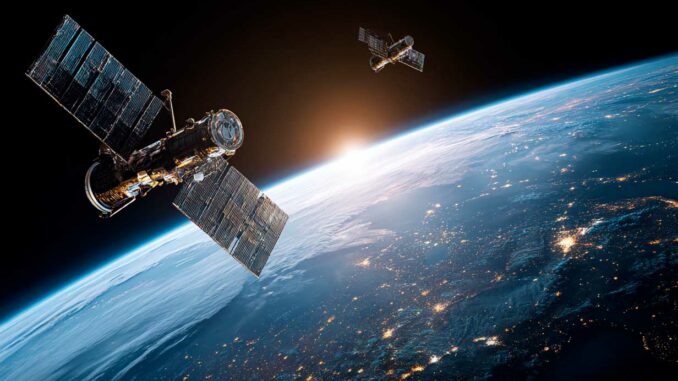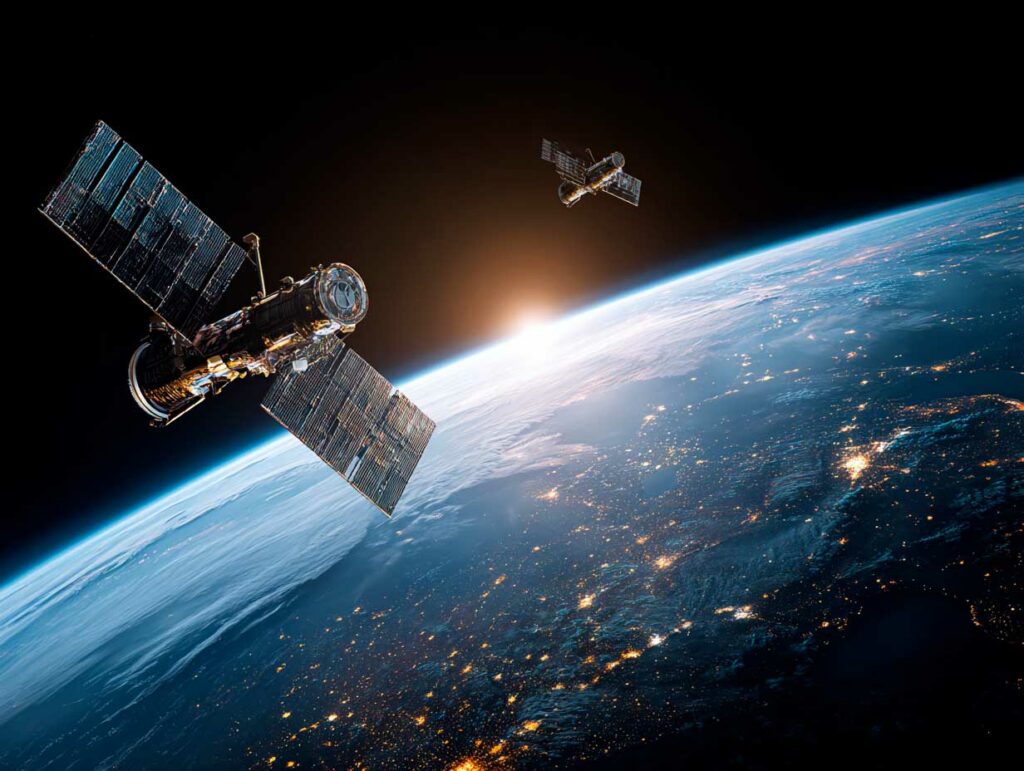
Explore the world of secret space programs in 2025, where military interests, colossal budgets, strategic alliances, and classified technologies collide.
The rise of the major powers’ space ambitions
In 2025, the major powers—the United States, China, Russia, India, and the European Union—are stepping up their strategies to assert their influence in space. Secret space programs in 2025 are no longer solely for scientific research: they have become instruments of political and military power. The militarization of space in 2025 is reflected in the creation and consolidation of dedicated structures, such as the U.S. Space Force, which now applies a comprehensive doctrine of space warfare. This includes orbital supremacy, neutralizing enemy capabilities through electromagnetic warfare and cyberspace, and protecting critical infrastructure. This focus confirms that the true intentions of secret space programs go far beyond exploration or simple observation: they aim for active and defensive control of the space environment.
The military objectives of secret space programs
Among the flagship projects is the Golden Dome plan, announced in January 2025. This program involves the deployment of a constellation of interceptor satellites capable of neutralizing ballistic, hypersonic, and cruise missiles in flight. The estimated investment of $175 billion underscores the scale of this initiative and its ambition: to have a global space shield. If this capability were to become operational, it would represent a step change in defense operations, but could also trigger a space arms race, prompting other powers to develop offensive countermeasures.
Geopolitical issues and international alliances
The strategic environment is becoming increasingly tense alongside these technological advances. Washington is considering the creation of Allied Space Forces, a military space coalition involving partners such as the United Kingdom, Japan, and Australia. This alliance would be tasked with coordinating surveillance, defense, and rapid response to orbital threats. On the other side, Beijing is experimenting with satellites capable of complex maneuvers, described as “dogfighting in space,” suggesting the ability to neutralize enemy objects. Moscow, for its part, is causing concern with satellites such as Cosmos 2553, suspected of being able to carry or simulate a nuclear payload. These developments illustrate a shift towards space as a strategic theater where the power relations of the 21st century are being played out.

Budgets allocated to secret space programs
In 2025, investment in secret space programs will reach unprecedented levels, reflecting their strategic importance. In the United States, the U.S. Space Force has a budget of $28.8 billion for fiscal year 2025. Although this is the first decrease since its creation, nearly 66% of this budget is devoted to research, testing, and development, particularly for secure communications satellites, early warning systems, and secure navigation constellations. The total budget of the Department of Defense, which amounts to approximately $850 billion, allocates a significant portion to space, confirming the priority given to orbital capabilities in US strategy.
In India, the government approved 26,968 crore rupees (approximately $3 billion) in June 2025 for the deployment of 52 surveillance satellites as part of the SBS-3 program. These systems are expected to be operational by 2029 and provide continuous observation coverage, improving early detection and strategic reconnaissance. This decision marks India’s rise in the field of space espionage and confirms the integration of space as a pillar of its national security doctrine.
Classified technologies and spy satellites
In 2025, classified technologies related to space become a central focus of strategic competition. The United States is concentrating part of its efforts on the development of Next-Generation OPIR (Overhead Persistent Infrared) satellites, capable of detecting missile launches, including hypersonic ones, with increased accuracy. At the same time, Protected Tactical Satcom systems aim to ensure secure, jamming-resistant military communications, even in highly contested environments.
The race for classified technologies is not limited to the individual capabilities of each satellite. It relies on the deployment of low Earth orbit (LEO) constellations, offering increased redundancy and resilience to kinetic or electronic attacks. This dense network maintains a constant flow of data, even in the event of partial network neutralization.
Another notable development is the automation of decision-making through embedded artificial intelligence, reducing response times to threats and compensating for the latency associated with space transmissions. These advances, rarely detailed publicly, illustrate the growing importance of spy satellites and covert systems in the military doctrine of major powers.
The risks associated with clandestine space programs
The accelerated development of clandestine space programs is not without consequences. The constant increase in the number of objects in orbit, whether operational satellites or debris, significantly increases the risk of collisions. By 2025, it is estimated that there will be 29,000 pieces of debris measuring more than 10 cm, 670,000 pieces measuring between 1 and 10 cm, and more than 170 million fragments measuring between 1 and 10 mm. Each of these objects, even small ones, can cause critical damage due to orbital speeds exceeding 27,000 km/h. This phenomenon, known as Kessler syndrome, directly threatens the long-term viability of access to space.
Beyond the physical risks, the integration of space weapons or orbital offensive capabilities into these programs calls into question international legal frameworks. The 1967 Outer Space Treaty, the founding text of space governance, explicitly prohibits the deployment of weapons of mass destruction in space, but does not outlaw conventional weapons or anti-satellite systems. This loophole allows states to develop and test devices that can neutralize or degrade adversaries’ space capabilities without directly violating international law.
Secret space alliances and strategic cooperation
Faced with this growing militarization, strategies are diverging. Some states are choosing isolation to preserve the confidentiality of their programs, while others are relying on discreet partnerships. Europe, faced with uncertainties linked to US budget cuts, is seeking to reduce its dependence on NASA for its lunar missions. It is stepping up discussions with India to pool certain capabilities, while stimulating private investment in space, which reached $1.5 billion in 2024. Although rarely publicized, these collaborations aim to strengthen strategic autonomy while sharing the costs and risks associated with orbital ambitions.
Discovering the invisible to better anticipate space
At this stage of the decade, the true intentions of the major powers’ secret space programs remain strategic, multiple, and pressing:
- asserting military supremacy in space;
- deploying often classified technologies for espionage, communication, and defense;
- anticipating terrestrial conflicts by exploiting orbits;
- redefining the boundaries of international cooperation.
The context of 2025 reveals that space has become a theater of power where fragile diplomacy and military pressure intersect, calling for a rethinking of international norms for space governance.
War Wings Daily is an independant magazine.